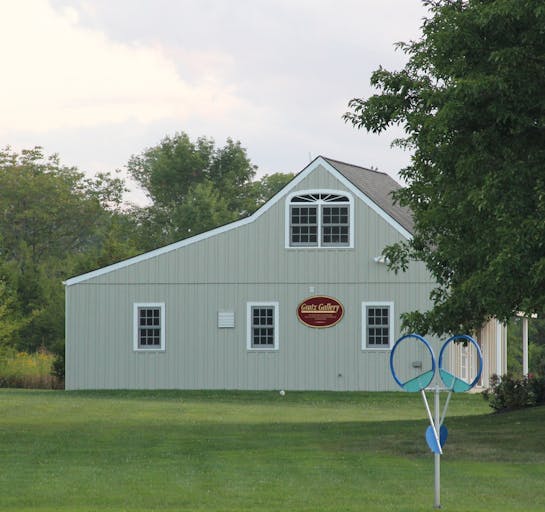Rosamond Smith Bouve
1876 - 1949

Rosamond Smith Bouve
1876 - 1949
Rosamond Smith Bouve's career has mostly been forgotten. Thanks to a renewed interest in the Boston School, particularly in its female members, painters such as Bouve have recently been receiving their due attention. However, few artists associated with the School so thoroughly absorbed the style of its leading painters as did Bouve, who was one of Boston's most active artists of the period, both in the studio and the classroom.
Rosamond Lombard Smith was born in Boston at a time when that city's local art scene was taking on an increasingly cosmopolitan character. When she was only seventeen, Smith enrolled at the at the School of the Museum of Fine Arts, Boston, then under the leadership of Edmund Tarbell, the famed Boston impressionist painter. Smith's first class, drawing from antique casts, was led by Philip Leslie Hale, and in 1894 she was advanced to Frank W. Benson's life drawing class. She received her diploma in 1896, but she remained at the School, thanks to a scholarship she earned for further studies. The scholarship afforded Smith two years of study with Tarbell, who instructed her in painting. During her matriculation, Smith was awarded several prizes, including a first prize in portraiture in 1897. In 1899, while continuing her studies with Tarbell, Smith was appointed teaching assistant under Hale, making her one of the few women instructors at the Museum School.
In 1902, Smith and several of her female counterparts traveled to Europe, passing through Italy, Spain, Germany, and France. Soon after her return, she rented a studio at Boston's distinguished Harcourt Building, a building shared by many of Boston's most notable artists, including Edmund Tarbell, Frank Benson, William Burpee, Joseph DeCamp, William Macgregor Paxton, Fred Holland Day, and Kahlil Gibran. Smith's stay at the Harcourt Studios ended tragically, when the building was destroyed by fire in November 1904, only a few months after one of her paintings had been accepted at the annual exhibition of the Pennsylvania Academy of the Fine Arts, Philadelphia. Undeterred, in 1906 Smith took a space at the Fenway Studios in Boston, where she lived and worked until her marriage in 1924.
During her stay at the Fenway Studios, Smith's reputation grew steadily. She continued to exhibit at the Pennsylvania Academy regularly from 1906 to 1915, and again in 1921-23. She also exhibited at the Corcoran Gallery of Art, Washington, D. C., in 1908, 1912, 1919, 1923; at the National Academy of Design, New York, in 1914 and 1917-19; the Carnegie Institute, Pittsburgh, Pennsylvania, in 1912; and at the Art Institute of Chicago, in 1922. She contributed two oils to the Panama-Pacific International Exposition, San Francisco, in 1915, winning a bronze medal. In 1914, Smith was one of forty-two charter members of the Guild of Boston Artists, and a work of hers was included in the Guild's inaugural exhibition that year. This was soon followed by her first one-woman show in December 1914, also held at the Guild. She continued to exhibit regularly at the Guild for many years.
Smith seems always to have been dedicated to teaching, in addition to her pursuit of a career as an artist. In 1906, she took a post as an instructor at Miss Porter's School in Farmington, Connecticut, for two summers, and in 1913, she began an eleven-year tenure as an art teacher at Miss May's School in Boston. Smith married Thomas Tracy Bouve, an old acquaintance of hers, in 1924. She vacated her space at the Fenway studios, and the couple moved to New York, where Thomas Bouve lived and worked as a pulp fiction writer and poet. Having to start afresh in a new city, Rosamond Bouve joined the National Association of Women Painters and Sculptors, with whom she exhibited and served as a jurist on several exhibition committees. Although her career slowed as she adjusted to married life, she continued to exhibit her work until the late 1920s.
When her husband died in 1938, Bouve moved to Great Barrington, Massachusetts, a town located in the Berkshires, to live with her sister Eleanor. The two sisters moved three years later to Annisquam, Massachusetts, where the Smith family had summered for many years. Bouve died in Annisquam in 1948.
Bouve's works are mostly portraits and figure pieces painted in the Boston School idiom. The subjects of many of her works are of her family, including her sister Eleanor and a number of her nieces. Bouve was equally adept at interior pieces, painted very much in the style of Tarbell, as well as sunny, colorful works set out-of-doors, which, with their brilliant color and thickly applied impasto, resemble the works of Frank Benson. Many of these works are plein-air pictures created during the summer in and around Annisquam.
